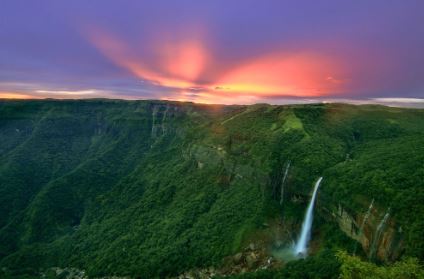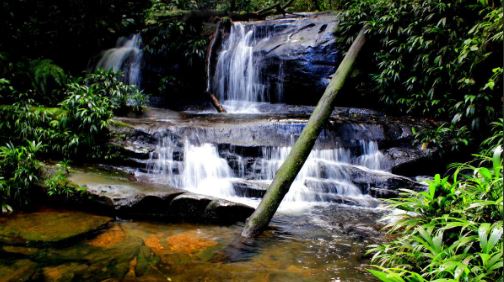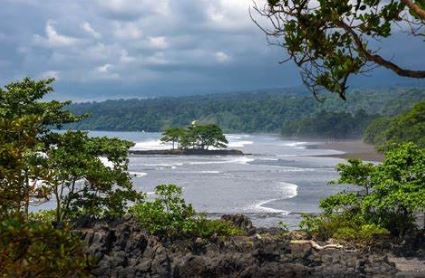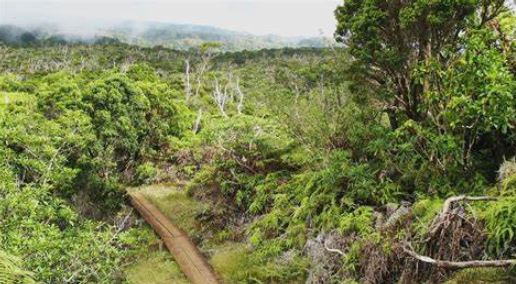Embark on a journey to uncover Earth’s most awe-inspiring wet wonders with our curated list of the top 5 rainiest places on the planet. From lush tropical rainforests to misty mountaintops, delve into the extraordinary beauty and diversity of these remarkable destinations, where rain showers breathe life into vibrant ecosystems and captivate the imagination of adventurers worldwide.
1. Mawsynram, India – 11,871mm
The wettest place on Earth is Mawsynram, which is found in the Indian state of Meghalaya. The average annual rainfall in this tiny community, which is tucked away in the Khasi Hills, is an incredible 11,871 millimeters (467.4 inches). Its exceptional precipitation levels are a result of its unusual geographic location, which puts it in the path of breezes from the Bay of Bengal that are heavy with moisture. The region frequently experiences flooding and landslides during the monsoon season, which lasts from June to September and brings constant downpours. The beautiful green scenery of Mawsynram flourishes in spite of the difficulties presented by such harsh weather, with vivid vegetation and deep forests prospering in the copious amounts of rainfall. The village’s amazing climatic phenomenon, which provides a window into the breathtaking power of nature, draws tourists.

2. Cherrapuni, India – 11,777mm
The northeast Indian state of Meghalaya, home to Cherra punji, is well known for its exceptional rainfall. Cherra punji, which was formerly the wettest place on Earth, with an average of 11,777 millimeters (463.66 inches) of precipitation annually. The settlement, which is located in the Khasi Hills, has severe monsoon seasons from June to September, which are marked by torrential rain and dense fog. The region’s robust biodiversity and lush foliage, especially the well-known living root bridges built by the native Khasi people, are supported by the region’s copious rainfall. Cherra punji’s distinct climate and breathtaking scenery enthrall visitors despite sporadic problems like erosion and landslides, providing a window into the wonders of nature’s strength and resiliency in one of the rainiest regions on Earth.

3.Tutunendo, Colombia – 11,770mm
Tutunendo, in Colombia’s Chocó Department, is well-known for its unusually heavy precipitation. Tutunendo is one of the rainiest areas on Earth, receiving an average of 11,770 millimeters (463.78 inches) of precipitation annually. The area, which is surrounded by thick rainforests on Colombia’s Pacific coast, has a tropical rainforest environment all year round with a lot of rainfall. The region’s rich biodiversity is nourished by the heavy precipitation, which also contributes to the rainforest’s thriving ecosystem. Numerous plant and animal species, including rare and indigenous ones, can be found in Tutunendo’s distinctive environment. The people of Tutunendo flourish in spite of the difficulties brought about by the constant rains because they embrace the resiliency needed to live in one of the wettest areas of the globe and depend on the wealth of natural resources.

4. San Antonio De Ureca, Equatorial Guinea – 10,450mm
San Antonio de Ureca, situated in Equatorial Guinea, stands out for its remarkable annual rainfall, averaging approximately 10,450 millimeters (410.24 inches). Nestled along the coast of Bioko Island in the Gulf of Guinea, this village experiences a tropical rainforest climate characterized by abundant precipitation throughout the year. The heavy rainfall contributes to the lush greenery and rich biodiversity of the region, supporting dense forests and diverse wildlife. Despite the challenges posed by the relentless rains, including occasional flooding and landslides, the community of San Antonio de Ureca perseveres, relying on the bounty of the natural environment for sustenance and livelihoods. Visitors to this unique region are greeted by the stunning beauty of its verdant landscapes and the resilience of its inhabitants in the face of nature’s forces.

5. Debundscha, Cameroon – 10,299mm
Debundscha, located in Cameroon, holds the distinction of being one of the rainiest places on Earth. With an average annual rainfall of approximately 10,299 millimeters (405.5 inches), it experiences exceptionally heavy precipitation throughout the year. Situated in the southwest region of Cameroon, near Mount Cameroon, Debundscha benefits from its proximity to the Atlantic Ocean, which contributes to the high levels of moisture in the air. The village’s lush surroundings are characterized by dense rainforests and cascading waterfalls, creating a breathtaking natural landscape. Despite the challenges posed by the relentless rains, including soil erosion and infrastructure issues, the community of Debundscha has adapted to its unique environment, relying on agriculture and local resources for sustenance. Visitors are drawn to the area’s unparalleled natural beauty and the resilience of its inhabitants amidst the forces of nature.


